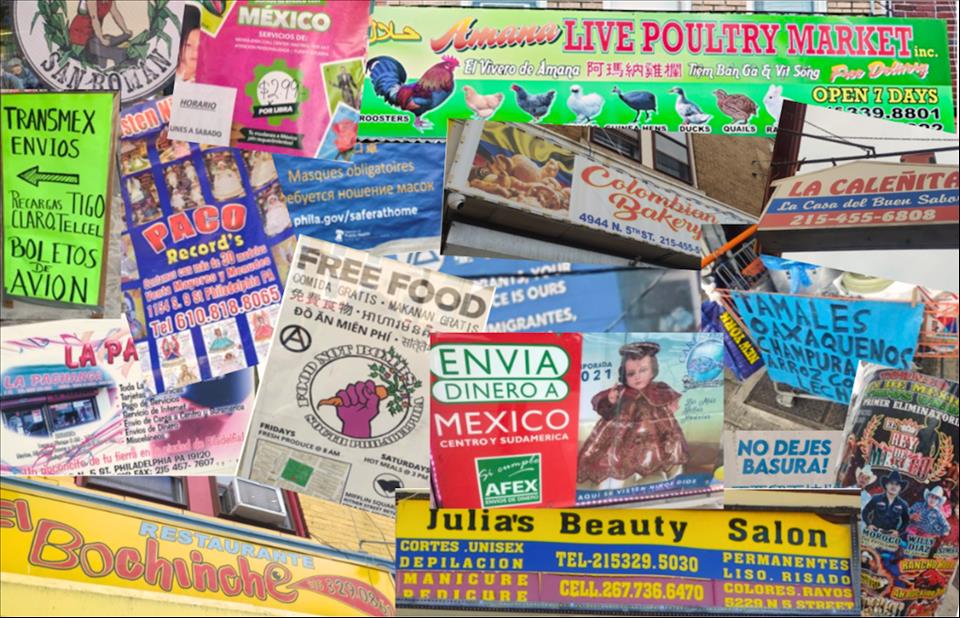I Analyzed 3,356 Signs To See How Language Use Is Changing In Three Latino Neighborhoods In Philly
Meanwhile, Spanish and multilingual signs are rapidly increasing in the Italian Market area of South Philadelphia, which in recent decades has become a stronghold of the Mexican immigrant community .
And in Olney, the heart of Philadelphia's Colombian diaspora , in upper North Philadelphia, Spanish signs are displayed among signs written in English and Korean – but have decreased and then increased again in recent years.
I am a Ph.D. candidate in Hispanic linguistics at Temple University, and I conducted what's called a linguistic landscapes study in these three neighborhoods from 2021 to 2023. I wandered through each neighborhood on foot several times each year, taking photographs of written signs in public spaces. By the end of my research, I had collected a total of 3,356 signs. These included business signage, posters and handwritten signs. My findings were published in the April 2024 issue of the peer-reviewed journal Languages .
I found that across all three neighborhoods, English dominates the linguistic landscape. Of the total 3,356 signs, about 62% were in English, while 24% were in Spanish and 13% were written in both Spanish and English. Only 29 signs – less than 1% – were multilingual, or written in three or more languages. Among these, Vietnamese was the most common third language.
Spanish signs became more common during my study, increasing from 19% in 2021 to 23% in 2022 and then jumping to 30% in 2023. Meanwhile, the number of signs in English dropped from 70% in 2021 to 61% in 2022 and then to 55% in 2023. Bilingual signs also increased, going from 10% in 2021 to 16% in 2022 and then dropping a bit to 14% in 2023.
The most dramatic shift I observed was in South Philadelphia, where English signs decreased steadily from 72% in 2021 to 51% in 2023, while Spanish signs doubled from 18% to 36%.
This linguistic shift most likely reflects the presence of immigrant communities that are still growing, particularly those from Cambodia and Mexico .
Why it mattersThe Golden Block has been a political and cultural hub of Philadelphia's Hispanic community since the mid 1970s. For decades, many have viewed it as the heart of Philadelphia's Latino community.
North Fifth Street in Philadelphia has been a hub of Latino culture and business for over 50 years. Jeff Fusco /The Conversation U.S. , CC BY-NC-ND
However, ethnographic research I conducted in 2020 revealed that despite the presence of many Hispanic families and businesses, Spanish isn't always dominant in that area. Research shows a tendency for non-English speakers to lose their native language proficiency by the third generation .
And while Spanish use may be declining on the Golden Block, my study reveals that Spanish and other languages, like Khmer and Vietnamese, are gradually increasing overall across the three neighborhoods. This reflects the city's growing linguistic diversity and cultural globalization, and that various immigrant communities are making the Italian Market a new hub for linguistic and cultural diversity.
How I do my workTypically, I begin with a classic ethnographic approach: walking through different areas, talking with locals and familiarizing myself with the environment. Once I am immersed in the area, patterns of language in specific contexts become apparent. It is at this point that one wears their linguist hat and begins formulating hypotheses to develop a study, and starts collecting data, which for me is the most enjoyable process of the research.
The Research Brief is a short take on interesting academic work.

Legal Disclaimer:
MENAFN provides the
information “as is” without warranty of any kind. We do not accept
any responsibility or liability for the accuracy, content, images,
videos, licenses, completeness, legality, or reliability of the information
contained in this article. If you have any complaints or copyright
issues related to this article, kindly contact the provider above.
Most popular stories
Market Research

- $MBG Token Supply Reduced By 4.86M In First Buyback And Burn By Multibank Group
- Mining Chemicals Market Size, Industry Trends, Growth Factors, Opportunity And Forecast 2025-2033
- Excellion Finance Launches MAX Yield: A Multi-Chain, Actively Managed Defi Strategy
- Pluscapital Advisor Empowers Traders To Master Global Markets Around The Clock
- UK Cosmetics And Personal Care Market To Reach USD 23.2 Billion By 2033
- Nonprofit Organization Consultancy Business Plan2025: Essentials For Entrepreneurs






















Comments
No comment